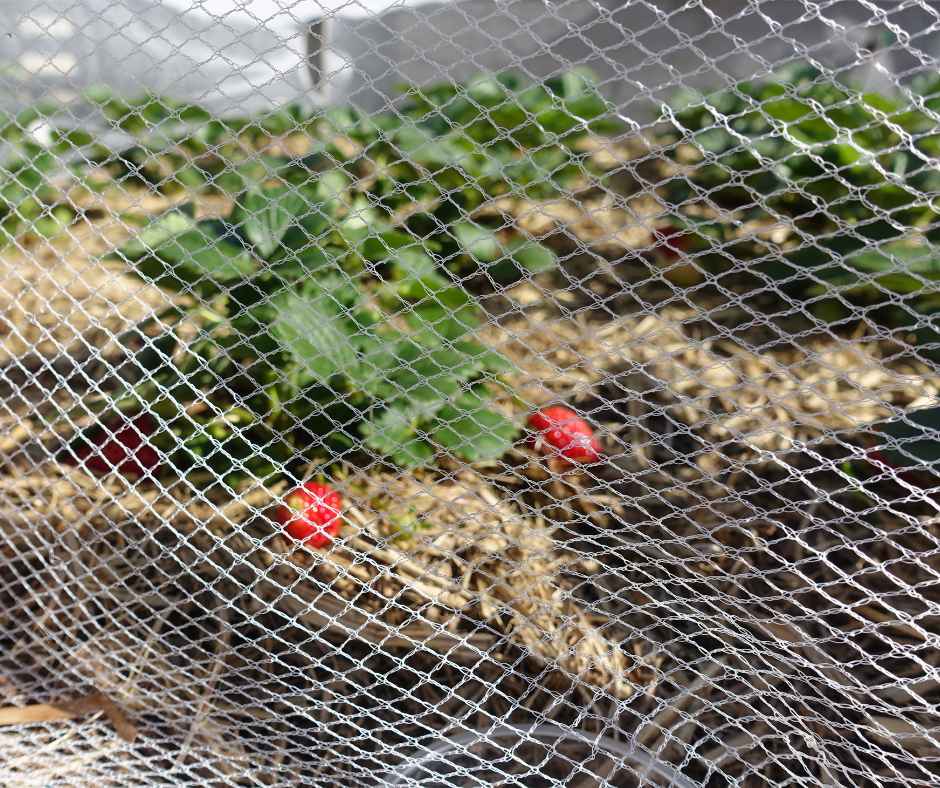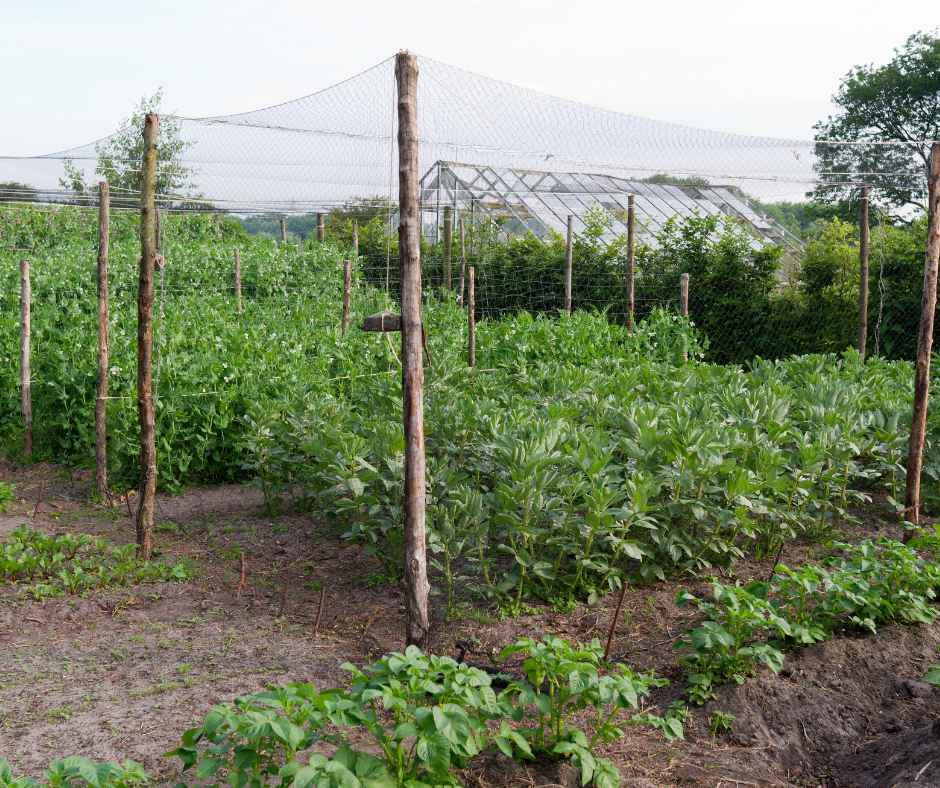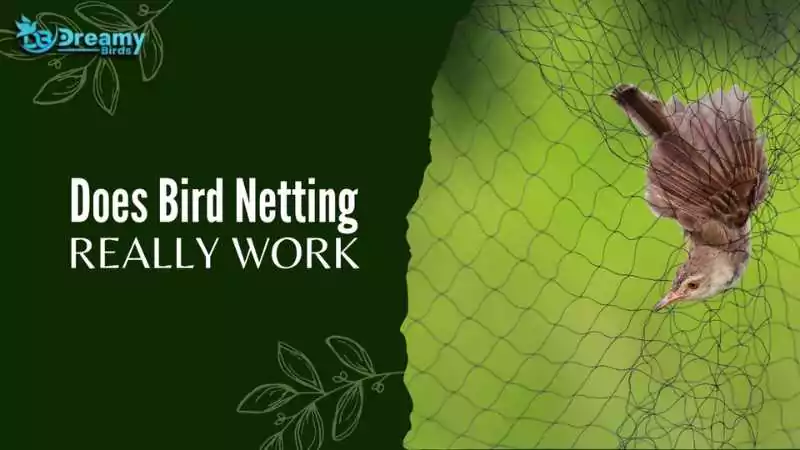Ever caught yourself asking, “Does bird netting really work?” Well, you’re in luck!
Bird netting effectively prevents birds from accessing areas like crops or buildings, reducing damage and health risks. When installed and maintained correctly, it provides a humane deterrent, ensuring long-term protection without harming birds.
Join us as we delve deep into the world of bird netting in our latest blog! It’s a kind, effective way to keep those pecking pals at bay, whether you’re safeguarding lush gardens or your spotless windows.
Wondering about the setup or looking for alternatives? No worries, we’ve lined up all the tips and tricks you need.
So, gear up and let’s make your space a bird-free haven with our easy-to-follow guide!
What is Bird Netting?
Bird netting is a mesh used to prevent birds from accessing areas like gardens or buildings. Made from materials like polyethylene or steel, it protects crops and structures from damage, nesting, and fouling, providing a humane deterrent solution.
Bird netting is a net made from materials like plastic or metal. It’s used to stop birds from getting into places they shouldn’t be, like gardens or the sides of buildings. Farmers use it to keep their crops safe, and folks in cities use it to keep buildings clean.
It’s a perfect way to keep birds away without hurting them, making sure everyone and everything stays safe and sound.

The Purpose of Bird Netting in Pest Control
Bird netting is super essential for farmers and gardeners. Birds, although beautiful, can be a real headache when they munch on crops or make a mess on buildings. Netting is a way to say, “Sorry, birds, not today!” without causing them harm. It’s like setting up a “keep out” sign but in a bird-friendly way.
How Does Bird Netting Work?
The Science Behind Bird Netting
So, how does this magical barrier work? Bird netting creates a physical shield between the birds and whatever you’re protecting. When birds fly close and see this barrier, they think, “Oops, can’t go there,” and fly off to find their snacks elsewhere. It’s simple yet super effective.
Different Types of Bird Netting and Their Uses
| Type of Bird Netting | Material | Description | Uses |
| Pop-up Bird Netting | Polyethylene | Lightweight and easy to maneuver, this netting is designed for temporary or seasonal use. It pops up to protect plants and then can be easily stored away. | Ideal for protecting berries, greens, and other garden plants from birds. |
| Wire Crop Coop | Low Carbon Steel | Sturdy and durable, designed to create a barrier around a garden or a specific crop area. | Used to keep birds and animals like deer and rabbits away from garden areas, safeguarding a variety of crops. |
| Crop Cage | Powder-coated Steel Frame, Polypropylene, Polyethylene, Polyester | A robust structure that encloses crops completely, often with a door for easy access. | Perfect for protecting ripening fruits and vegetables in gardens from birds and other pests. |
| Wire Superdome | Low Carbon Steel | A taller, dome-shaped netting structure to accommodate the height of growing crops. | Suitable for protecting taller plants and crops from birds, such as corn stalks or small fruit trees. |
| Wire Row Cloche | Galvanized Steel Wire | Long and narrow, designed to cover rows of plants like a tunnel. | Protects seedlings and young plants, particularly useful for rows of vegetables like lettuce and carrots. |
| Wire Cloche | Steel | A smaller, dome or bell-shaped cover that protects individual plants or small rows. | Ideal for covering and protecting individual or rows of seedlings and young plants against birds. |
| No-Knot Bird Netting | UV Protected, Polypropylene Knotted Netting | Made from durable material that’s resistant to rot and waterproof, featuring a no-knot design for easy handling and installation. | Designed to block birds from entering large, open areas like roofs, warehouses, and more. It’s effective in both urban and rural settings. |
Every kind of bird netting has its particular job. It helps keep crops, buildings, and unique places safe from birds and other wild animals. When people who grow plants, farm, or take care of buildings know about the different kinds of netting, they can pick the best one to keep their stuff safe and treat animals nicely.

Pros and Cons of Bird Netting
Bird Netting Pros
- Easily Installed: You can set it up pretty quickly once you get the hang of it.
- Discreet: It’s not an eyesore. Most people won’t even notice it’s there.
- Long-lasting: This stuff is tough! It can last up to 10 years, resisting sun, wind, and rain.
Bird Netting Cons
- Expensive Installation: Getting it set up can cost a bit, especially for significant areas.
- Regular Maintenance Required: You’ve got to check on it, or it might get damaged.
- Potential for Birds to Get Trapped: If it’s not maintained, birds might accidentally get caught.
Alternatives to Bird Netting
Sometimes, bird netting isn’t suitable for everyone. It could be the cost, or it could be the look. Don’t worry! There are other excellent ways, like the AVIX Autonomic, a fancy laser system that scares birds away without touching them.
Exploring Alternatives like AVIX Autonomic and Laser Technologies
If bird netting isn’t quite right for you, don’t worry! Check out incredible high-tech options like AVIX Autonomic and other laser gadgets. These intelligent tools use bright lights or scary sounds to gently shoo birds away without touching them.
They’re super for places where nets might not fit or if you want something a bit more modern. Plus, they work day and night, keeping your crops or buildings safe and sound. It’s like having a friendly scarecrow that never sleeps, always ready to keep birds at bay in a kind, high-tech way!
Read more: Effective Strategies to Keep Birds Away from Your Pool
Ethical and Environmental Considerations
We love birds, and we want to keep them safe. That’s why it’s super important to choose bird control methods that don’t hurt them. We’re all about keeping your crops safe while also being friends with our feathered pals.
The World Wildlife Fund and other groups care a lot about animals and the environment. They say as long as we’re using bird netting responsibly, it’s a good option. It protects your crops without causing harm to the ecosystem.
Installation and Maintenance of Bird Netting
In our next section we explore how to quickly set up and maintain bird netting to keep it practical and long-lasting, ensuring your spaces stay bird-free and beautiful.
How to Install Bird Netting Correctly
If you want to install bird netting correctly, follow these steps:
- Choose the Right Size: Pick a net that covers your garden or building area fully.
- Lay It Out: Spread the netting over the area you want to protect, like trees, bushes, or building sides.
- Secure the Edges: Tie the netting down at the edges tightly, ensuring there are no gaps.
- Tuck Your Plants: Imagine you’re tucking your plants into bed, covering them with a protective net instead of a blanket.
- Get Some Help: It might be easier with a friend to help hold and secure the net.
- Final Check: Make sure everything is covered and there are no loose ends. Your bird barrier is all set!

Maintenance Tips for Longevity and Effectiveness
Keep your bird netting strong and working long by giving it a quick look now and then. If you see any rips or little holes, patch them up fast to keep those sneaky birds out. Also, brush off leaves and any junk caught in the net.
A clean net means a happy garden or building! Just a little care keeps your net strong against weather and time, making sure it’s always on guard for you.
You can also read: 3 Effective Steps to Keep Birds Away from Your Patio
Making the Right Choice for Your Needs
Think about what you’re protecting and the types of birds you’re dealing with. Bird netting is fantastic for many situations, but it’s always good to consider all your options.
If you’re unsure, talk to the pros! Bird Control Groups, wildlife experts, or agricultural advisors can help you make the best choice for your situation.
People Also Asked
Does Bird Netting Harm Birds?
Good news! When appropriately used, bird netting doesn’t harm birds. It acts more like a gentle reminder for them to find food elsewhere. Always check for trapped birds and release them safely if you find any.
How Long Does Bird Netting Last?
Quality bird netting can last between 5 to 10 years. It’s a significant investment because it keeps working year after year, protecting your crops or buildings.
Can Bird Netting be Used in All Weather Conditions?
Absolutely! High-quality bird netting is designed to withstand sun, rain, and even snow. Just make sure it’s installed correctly and maintained for the best results.
How effective is bird netting?
Bird netting is really good at keeping birds away from places like gardens and buildings. It stops them from eating plants or making a mess. If you put it upright and check it often, it works great for a long time without hurting the birds. It’s a safe and friendly way to protect your stuff!
Wrap Up
Bird netting really does work when it’s the right fit for your needs. It’s a safe, ethical way to protect your crops or buildings while being kind to our bird buddies.
Ready to give it a try? Do a little research, talk to some experts, and you’ll be well on your way to a bird-free, happy space!
Remember, bird netting isn’t just about keeping birds out; it’s about finding a balance where humans and wildlife can coexist peacefully. So, here’s to a bird-problem-free future, where your gardens flourish, and the birds are just as happy and healthy!

